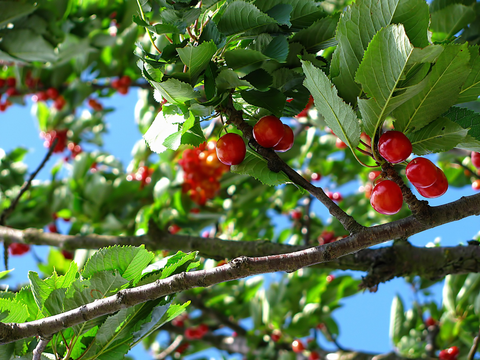Have you ever rolled your eyes at a $20 bag of coffee at a coffee shop? The feeling is all too familiar, but the more you learn about coffee, the more you'll realize it's not so crazy after all.
When we break down coffee pricing to a detailed level and look at it with a critical eye, the reality isn’t very pleasant: real, hard working people suffer when we’re too stingy on our coffee beans.
How much should you pay for coffee beans? What is socially responsible? How little is unethical? What is a good balance of fair wages and affordable coffee?
These are the questions this blog will attempt to address, but be aware that this issue is complex beyond measure. There are always hidden variables and consequences when we play with economics and international trade. While this summary of coffee economics was born out of research, there are always exceptions;
Let’s talk about the farmers first. Then we’ll get into what you should be paying for coffee.
Read: 3 Reasons Buying Cheap Coffee Is Bad For The World
Malnutrition And Poor Education
Coffee farming communities around the world face challenges many of us would be terrified to find ourselves before. According to the Food Empowerment Project, child labor is particularly high in coffee producing territories of Brazil and Honduras, causing a decline in children’s education.
Harvesting coffee can be dangerous for children because of heavy bags, long exposure to the sun’s rays, and unsafe exposure to agro-chemicals. On a bigger scale, child labor results in generational poverty, which leads to more child labor and lack of education.
Even as recent as 2003, over half of Guatemala’s harvest force was not given access to overtime pay or employee benefits protected by the law. Many of these harvest workers received less than the guaranteed minimum wage.
A 2010 study, cited in the Specialty Coffee Association of America’s (SCAA) whitepaper on Hunger In The Coffeelands, revealed that 63% of coffee households in Central America experience food insecurity and malnourishment at some point each year.
While these examples are from the Americas, the problems of malnutrition and poor education are global.Not to mention other problems of healthcare, debt slavery, or environmental decline...the reality of the coffee farmer isn’t as bright as we may wish it is.
Where Does The Money Go?
There have been a few studies that map out the flow of money from coffee consumers to coffee farmers. It can be shocking to find out what the farmer gets, compared to what the average consumer spends at a coffee shop.
The SCAA released a variety of surveys and conclusions in 2014 titled Economics of the Coffee Supply Chain. Within this research is a general blueprint for following the trail of money in coffee:
Green Coffee Cost - $1-6.00 Per Pound
This money is sent to the farmer or farming cooperative and goes towards paying harvesters and employees, processing the cherries, equipment, government taxes, and administrative fees.
This assumes a minimum Fair Trade price, though many roasters still buy coffee at $1-2 per pound, despite the overwhelming evidence that this encourages generational poverty.
(2019 Update: the current "market price" of coffee this year has hovered around $1 per pound of unroasted coffee. This price is dangerously low because it means many farmers won't turn any profit for the year. Another reason buying low-grade, cheap coffee is harmful to our world.)

Read: What Makes Specialty Coffee So Special?
Transportation Cost - $0.50 Per Pound
This category of costs includes shipping fees, warehouse storage fees, customs fees, and the profits claimed by the importer.
Roasting Cost - $5-6.00 Per Pound
The most costly phase of the coffee’s journey begins and ends with roasting. This stage includes roasting facilities, packaging, administration fees, and the loss of water weight during the roasting process. Note: this doesn’t include employee wages.
You can already see that the journey of each pound of coffee is up to $8 or $9. This doesn’t include roasting workers, but it does assume that the green coffee is purchased at a premium price.
In other words, coffee beans sold for less than $9 per pound are not being purchased at a price that is sustainable or beneficial to coffee producing communities. Yet, this is the price of most supermarket coffee.
The big lesson here: $10 bags of coffee are irresponsibly sourced bags of coffee because they too cheap to keep farmers out of poverty.
Think back to that $20 bag of coffee sitting on the shelf at a nearby coffee shop. Doesn't seem so insane now, does it?
Read: What Does A Coffee Roaster Actually Do?
How Roasters And Organizations Fight Poverty
Thankfully, there are hundreds (if not thousands) of roasters around the world partnering with coffee producers to fight against the poverty-supporting systems the world has had set in place for generations.
Fair Trade is one of these organizations. It teaches coffee farmers to put in place a variety of environmental and wage protections in exchange for a higher minimum price (typically around $1.50 per pound, which is still unsustainably low). Consumers and roasters then buy the coffee at the premium price for the sake of a better world.
Thrive Coffee is another groundbreaking system. By educating farmers on sustainability and coffee growing science, they are able to help growers fetch higher prices for high-quality coffees. Thrive takes a small cut and uses it to fund efforts to empower more producers. It’s a system that increases quality, producer profit, and promotes long-term sustainability.
Direct trade coffee roasters are often able to pay higher prices for great coffees because they cut out several middlemen steps by showing up in person at farms. When roasters make long-term partnerships and investments into farms, communities are benefited by income security, increased coffee quality, and long-term success.
Read: Fair Trade VS Direct Trade Coffee: Which Is Better For Coffee Sustainability?

Source: Neil Palmer
When globally conscious roasters and organizations work with struggling farms, coffee producers are given the price and flexibility to provide more for their communities. Sometimes this comes in the form of higher wages. Sometimes it comes in the form of closer health clinics and schools, education for women, and vegetable farms.
With honest, ethical partnerships, the world thrives. Producers face less severe financial trials, roasters make more money, and consumers enjoy better coffee.
As long as the consumers are willing to pay for it.
What It Means For Your Daily Coffee Ritual
If you want to participate in the global effort to bring fair and just wages all the way down the coffee supply chain, buy your coffee carefully.
A big part of this is knowing how to read coffee packaging. When you can diagnose a roaster’s values and practices based on their packaging, you can avoid buying coffees from sources that are not as globally conscious as you. See our guide to Reading Coffee Packaging.
Once you’ve read enough coffee bags, you’ll realize that $10 bags don’t add up. They don’t display the signs of high quality, sustainably sourced coffee. This rules out most supermarkets and low-end coffee shops.
It's a tough pill to swallow, but there is no easy way to say what I am about to tell you: Ethical coffee will most likely run you $15-25 per bag.
Coffee at this price point was likely purchased at high performing farms at a premium price. At this price point, producers are encouraged to grow and leave their fear behind. Here, communities are slowly beginning to thrive in a new way.
Coffee at this price point is changing the lives of millions around the world.
Read: Starbucks VS Specialty Coffee: What's The Difference?
What Are You Going To Do About It?
The world’s a big place. It’s easy to forget about the under-educated and malnourished on the other side of the world. I know how it is. I am guilty of it too.
But buying coffee responsibly is such an easy way to make a positive impact. It’s a way everyone can get on board with sustainable sourcing and fair wages.
I urge you to consider the weight of your buying power. I urge you to support roasters and organizations that are partnering with coffee producers to bring about meaningful change.
Happy brewing!


